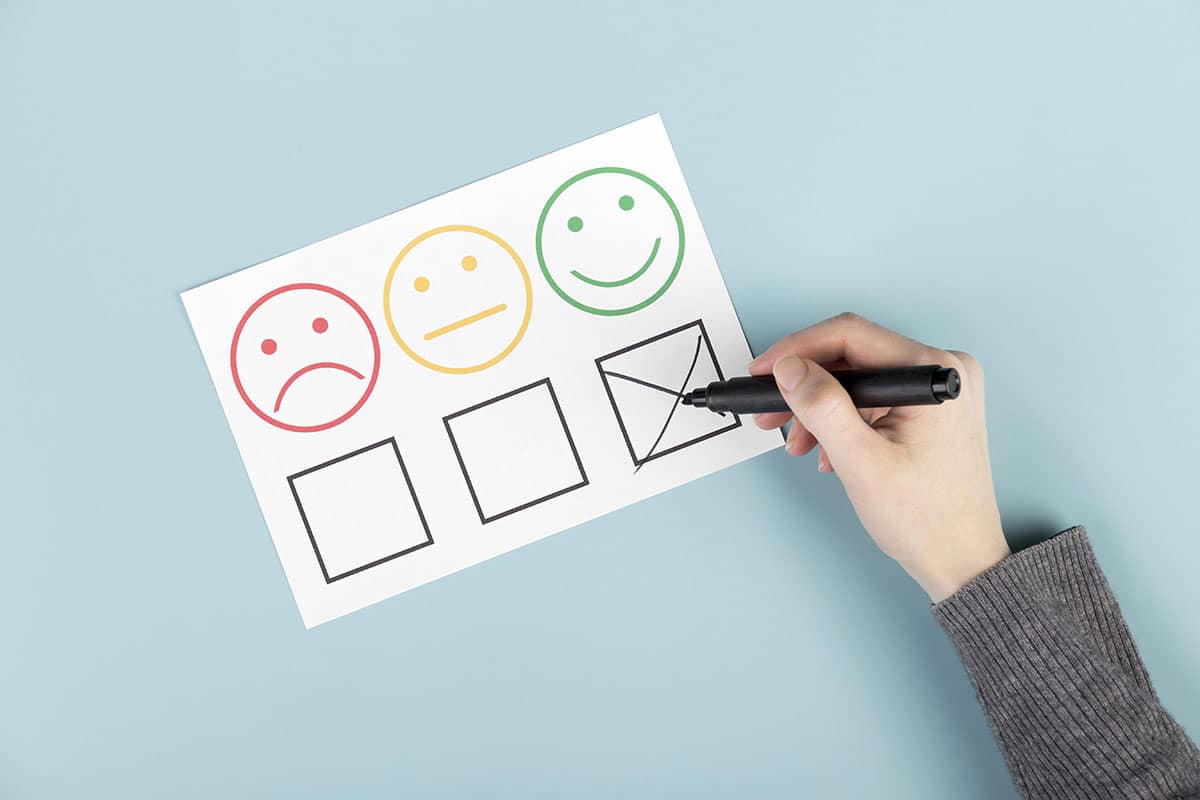Modern-day businesses tend to be data-driven and require high-quality data if they are to function efficiently. Data quality is significant because it plays an essential role when companies utilize it in terms of strategy development.
This is one of the key reasons behind a company deciding to send out surveys to its target audience. Asking your customers to complete a survey doesn’t necessarily mean they will. And that’s why making your Survey Completion Rate a priority is so important.
So, how do you do it? How can you increase your Survey Completion Rate?
In this article, we’ll look into the importance of your Survey Completion Rates, differentiate them from your Survey Response Rates, and share how to boost Survey Completion Rates by soliciting more refined responses.
Let’s get started!
Collect feedback with JustFeedback
JustFeedback helps your business increase profits and reduce risk by improving your customer experience
Understanding survey responses
It is crucial to understand what is meant by your Survey Completion Rate and how it’s used.
The Survey Completion Rate essentially refers to the percentage of people who successfully complete a survey.
Here’s how you can calculate your Survey Completion Rate —
Survey Completion Rate = (Number of people who fully completed the survey / Number of people who started taking the survey) X 100
As you can see, a Survey Completion Rate takes into consideration those who started the survey. It’s important to be specific here: respondents who did not start the survey are not taken into account here.
So, what would we consider to be a good Survey Completion Rate?
This question is paramount. You’re going to need to have a benchmark in order to judge any survey results.
To fully understand a standard Survey Completion Rate, you’ll have to consider your industry, type of survey, channel, sample size, and margin of error. There may also be additional factors to consider.
Your Survey Completion Rate also largely depends on the Survey Response Rate. Let’s take a closer look at how these two are linked.

Survey completion rate vs. survey response rate
Survey Completion Rates refer to the percentage of people who complete a survey, whereas Survey Response Rates are the percentage of people who respond to a survey.
It’s important to understand that although your aim may be to calculate your Survey Completion Rate, it doesn’t really provide you with a full picture.
This is because the Survey Response Rate provides a more comprehensive understanding of survey performance.
Survey Response Rates take into account all customers who were contacted and asked to complete the survey. But to do so, they would first have to respond to it.
The impact of a low survey completion rate
A low Survey Completion Rate can significantly impact your research. What might be the impact of a low Survey Completion Rate on your business?
Here are some potential impacts of a low Survey Completion Rate —
- It may lead to a poor survey experience.
- The recipients could start to dislike your brand.
- You might lose out on the opportunity to understand your target audience.
- Your survey execution strategy could go to waste.
- It could take you longer to reach your target audience.
- Generating high-quality responses might be more challenging.
- It will lead to incomplete survey data.
Note: Businesses that experience low Survey Completion Rates should be wary of non-responses and/or dropout attrition.

How can you increase the number of completed surveys?
If you’re aiming to boost your Survey Completion Rates, you should check out the following tips and tricks. Using these tactics could help your company to develop improved respondent-centric surveys.
Let’s take a closer look —
1. Create shorter surveys
You can’t know when your survey alerts will reach the target respondent. The recipients could well be busy at the time of receiving your email.
It is therefore important that you let respondents know that they have received a short survey that will only take a few minutes or even seconds to complete.
More importantly, you’ll have to stay true to your word on this point and send them a genuinely short survey. Don’t forget to conduct a test and figure out exactly how long it takes to complete your survey.
2. Improve survey relevancy
Relevancy is a factor that can make or break your survey campaign. To boost your Survey Completion Rate, you’ll have to ensure that all survey objectives are relevant to both your audience and your organization.
Initially, you should determine whether or not the audience for the survey has been correctly targeted. Once you’ve selected the right audience segment, frame the survey in a way that should reveal the audience’s pain points and goals.
The more relevant the survey, the higher the completion rate is likely to be.
3. Incentive-driven surveys
The reason your organisation conducts surveys is to learn about your audience and its buying behavior(s). But who benefits from such an informational transaction? The balance has to be maintained when soliciting survey responses.
The best way to achieve this is by incentivizing those respondents who choose to complete your survey. Examples of incentives for successful survey completion might be discounts, coupons,or cashback.
The idea is pretty straightforward — you need to provide respondents with a lucrative reason to complete your surveys.
4. Create catchy and interesting surveys
Your time is important to you, right? So, ask yourself this question — would you fill out a boring survey when you’ve got a busy schedule? Most of us wouldn’t! As we mentioned above, you’re going to have to pay out if you’re hoping to gain the respondents’ attention.
If you’ve got no plans to incentivize them, the least you can do is make the survey interesting to complete. Think about turning your survey into an unforgettable (and positive) experience and watch as your Survey Completion Rate skyrockets!
5. Choose the right channels
This is a no-brainer. A major aspect of any comprehensive target audience research is understanding which online or offline channels people tend to visit the most often.
This means you should determine the right channels before hitting send on your survey tools.
However, sending the survey out on the wrong channels won’t impact the Survey Completion Rate at all — because no one will even respond to it! And that’s certainly not what you want.
If you want to achieve a standard Survey Completion Rate, you’ll have to shortlist (and prioritize) the right channels and send out your surveys accordingly.
6. Ask only the essentials
Has it crossed your mind to bombard your respondents with every question you can think of? Well, it’s not a bright idea.
Although compiling a list of necessary questions for your target audience is an excellent approach to developing a complete audience overview, we recommend you stick to a few critical questions when crafting your survey.
Write a list of questions that you know you need answered and then prioritize them in a way that will help you achieve your set business and/or marketing objectives.
7. Clarity and conciseness
Shortlisting the right questions is just one aspect of developing a survey that guarantees results. Another involves using simple, clear, and concise question formats.
The latter is crucial when it comes to respondents being able to fully understand your survey questions
How is it possible to know if your targeted respondents will understand your questions? Before hitting send, you need to get as many members of the team as possible to check through your survey. After all, fresh eyes bring fresh perspectives.
Note what people have to say concerning the clarity of your questions and take the necessary steps to improve them.
8. Reach out to respondents
So, you didn’t receive as many completed surveys as you thought you would? Well, it’s time to step into action and make contact with those who didn’t respond to your surveys.
Do what you can to establish a connection with them and try to learn what made them avoid answering your survey. The more you know the better. Use this feedback to shape better future surveys.
9. “Gamify” the survey experience
Why not give it a go, right? Make completing the survey a fun experience for your target audience. This can be done by turning the survey interface into an enjoyable one.
One of the best ways of “gamifying” the survey completion experience is when respondents can unlock incentives as they answer each question.
We call this mechanism “micro-incentives”. This tactic can be very useful and make the experience entertaining. However, you’ll need to make sure the functionalities don’t force you to go over budget.
10. Ensure respondent’s anonymity
This is one of the most important factors that might affect your Survey Completion Rates. Make sure you let your respondents know that their survey responses are kept confidential and anonymous.
You must keep your promise to your respondents on this score, especially if you know you’re asking them to share sensitive or personal information.
Please ensure you collect consent, apply pseudonymization, or use other legal processes to ensure a respondent’s anonymity.
Final thoughts
We’ve taken the tour and shared everything you need to know about boosting your Survey Completion Rate. It’s now time for you to put what you’ve learned into action.
Go right ahead and design an experience that encourages respondents to successfully complete your surveys.
We highly recommend you put all these tips to good use. Make sure you closely monitor if and how they impact your Survey Completion Rate.
Although these tips and tricks can come in super handy, we still suggest you put customer experience at the forefront of all your customer survey strategies ,as this will truly push you in the right direction.
Did you find this post helpful? Stay tuned for more informative posts in the future.
